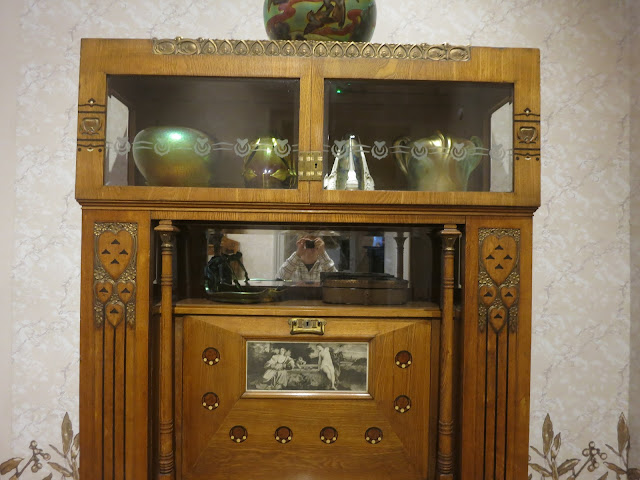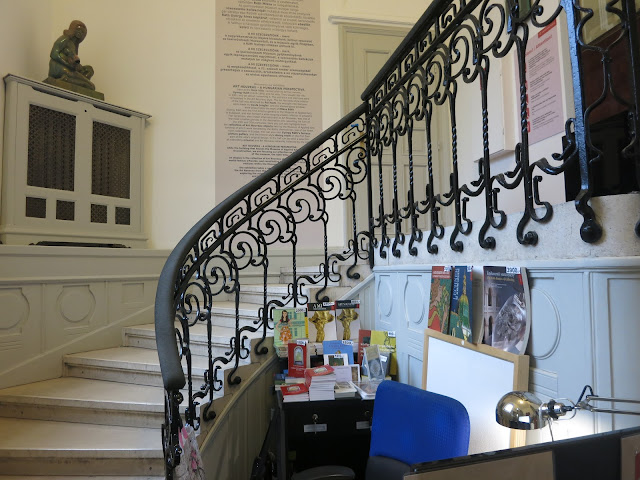It was rainy yesterday, so we went to the list of museums we were saving for an indoor day, choosing the Rath Gyorgy Villa, Rath Gyorgy (1828-1905)--or Gyorgy Rath as we would say in the US--was an esteemed jurist and legal scholar. In addition, he was an important collector of art, including major European paintings (now in the Museum of Fine Arts) and works of Art Nouveau, including those of Austria and England, but most significantly Hungarian Secession. He organized the Museum of Applied Arts in 1881 and was its first director until 1896.
When he died, he left his art collection to his wife who, in turn, left it to the Museum of Applied Arts with the stipulation that it would form "the National Rath Gyorgy Museum constituting an auxiliary part of the Museum of Applied Arts, which is inalienable and must be contained together." The museum was established in his villa at Varosligeti fasor 12, opened in 1906 and visited by Emperor (King in Hungary) Franz Jozsef in 1908. In 1948, the collection was broken up for ideological reasons, the proletarian dictatorship considering it dangerous to celebrate a bourgeois apartment. The museum re-opened in 2018. It includes much of Rath's original collection (most specially Zsolnay pieces and tiles), many collected in a series of cases, and a series of rooms designed to show what Hungarian Secession furniture and ornaments look like as used.
The highlight for me was the Dining Room. In this room, no piece (furniture, art, table settings) has a straight line; every piece includes the Art Nouveau curve.
There is also an Art Nouveau sitting room
From the Museum























No comments :
Post a Comment